Your 2022 Water Quality Monitoring Resolution: Remember Sample Guy
I just can’t help myself. I keep coming back to the image below, which has been in webinars, blogs, articles, and presentations I’ve been doing for the last 5 years. I’m like that stodgy old professor who keeps showing the same slide—except in marketing we call it repurposing content so I’m not that stodgy. Admittedly, though, my favorite figure needs a little updating—it should include autonomous vehicles like the rQPOD and even more stuff about data analytics, predictive modeling, and forecasting, which generate new ways to assess our data (indeed, new data in some sense).
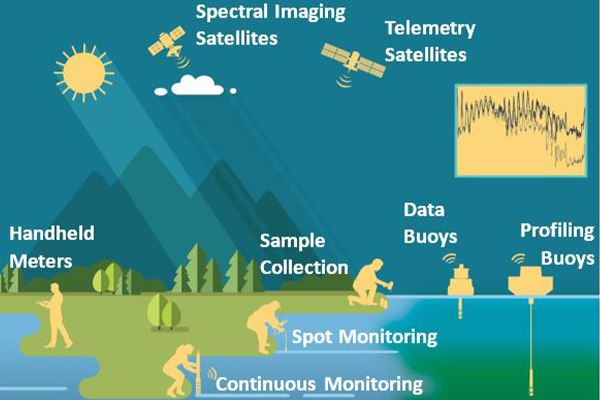
Special thanks to graphical artist Patrick Beatty of YSI for this timeless image, to which I’ve added the not-artful labels.
So why have I dusted off this oldie-but-goodie for your 2022 New Year’s Resolution?
Because of Sample Guy: the most passed-over, underappreciated, and perilously ignored figure in this image. Sample Guy crouches over there on the right bank, perhaps looking longingly at that EMM68 data buoy that is transmitting hundreds of data points in the time it takes him to drive out there, trudge through the mud and mosquitoes with his bottles, and get his stuff back to the lab. In a world where huge data sets can be generated by water quality sondes, autonomous vehicles, satellites, and machine learning, Sample Guy still drives the vast majority of water quality analyses.
If Sample Guy is not part of your water quality monitoring, or even if he is…
My recommendation for your 2022 New Year’s Resolution is to evaluate your overall water quality monitoring program and identify where it might be strengthened by Sample Guy.
Who Is Sample Guy?
Sample Guy is a representation: he includes the person who expertly collects the samples in the field, the one who properly preserves, packages, and delivers samples to a laboratory, the bench scientist that performs sample preparation, and at last the analyses using any number of laboratory instruments and validated (or not) methods.
Sample Guy is the field-to-lab process and people that generate the data that you just can’t get from a sonde or another in-field instrument, and which make those data more meaningful.
Sample Guy gets a lot of flak: he can be slow, he must be meticulous about sample handling, he can only get a few discrete data points at a time and, compared with continuous water quality monitoring, he’s a lot of dollars per data point.
Yet Sample Guy persists due to validated, broadly accepted methods that cover everything from the types of sample bottles to the validation of the proficiency of laboratory analysts. He especially persists because most environmental analytes simply can’t be detected by sensors. Sample Guy is also needed because, with a handful of notable exceptions (such as pH, DO, and temperature), sensors capture trends rather than measurements of a specific analyte.
To make the case for reevaluating your relationship with Sample Guy I return to my favorite topic of Harmful Algal Blooms (no, I’m not stodgy at all!). Our one-stop HAB page and YSI’s video HabHub will lead you to a lot of the material we have produced about HABs.
The HAB monitoring need where YSI’s water quality monitoring instruments really shine, especially the EXO sonde and our Total Algae (TAL) sensors, is early detection. Catching a bloom in its early stages can save precious time and money when it comes to sample collection, and ultimately water treatment (both in-source and in the plant).
Yet, there are at least three areas where HAB monitoring requires the services of Sample Guy. These include analyses for chlorophyll, the taste and odor compounds geosmin (trans-1,10-Dimethyl-trans-9-decalol) and MIB (2-methylisoborneol), and cyanobacterial toxins. A lot has been written by others about toxins; here I’ll concentrate on chlorophyll and the taste and odor compounds. I’ll close with a couple of surprising revelations for why this is an important topic to me in 2022.
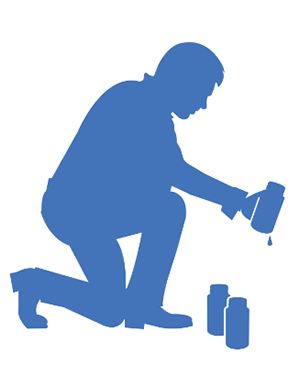
Reevaluate your relationship with Sample Guy in 2022.
Sample Guy and Chlorophyll
Sample Guy is critically important for the mother of all HAB monitoring parameters: chlorophyll a (hereafter just called chlorophyll). Chlorophyll is found in all cyanobacteria, including the HAB-forming blue-green algae. It is found in almost all other photosynthetic organisms as well, all the way up to plants.
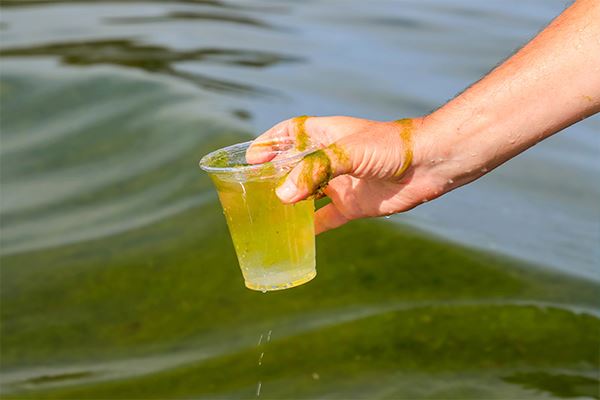
Ever since Elizabeth Arar and Gary Collins published EPA Method 445.0 in 1997, describing the in vitro determination of chlorophyll and phaeophytin using fluorescence, chlorophyll has stood as the most widely agreed upon indicator of the abundance of algae in aquatic systems. Method 445.0 requires careful field sampling that includes filtration and extraction with an organic solvent. So do its follow-on Methods: 446.0, for evaluation of multiple pigments by spectrophotometry, and 447.0, for HPLC detection. The same is true of most popular chlorophyll determination methods, such as ASTM D3731-87 and DIN 38409-60.
Measurement of chlorophyll in a concentrated and solvent-extracted sample will give different results than detection of the pigment in water using a TAL sensor (or any other environmental sensor, for that matter), even when the latter has been carefully correlated with the former. This is because what the sensors do is fundamentally different, as I’ve discussed in this classic webinar on How Algae Sensors Work.
Twenty-five years of data from Method 445.0 have formed the foundation for our understanding of HABs. Thus, if one wants to publish in the scientific literature, or report chlorophyll data to a regulatory agency, sensor and sonde data may be required to be backed up by an extractive method.
But there are other reasons that Sample Guy should be on hand to perform chlorophyll extractions. Sensor users should realize that there is no industry or regulatory standardization in sensors—each vendor’s sensor works a little differently than the next, and so it can be tricky to compare data between vendors, or even data from different sensor generations from the same vendor. There are also physical and biological factors that can affect attempts to measure chlorophyll in source water: the hydrophobicity of chlorophyll, the structure of the chlorophyll chromophore, and the combination of in vivo vs. cell-attached or free-floating forms are mentioned in a 2021 blog. (Learn more, HAB Monitoring and Phycocyanina | Dispelling Three Myths)
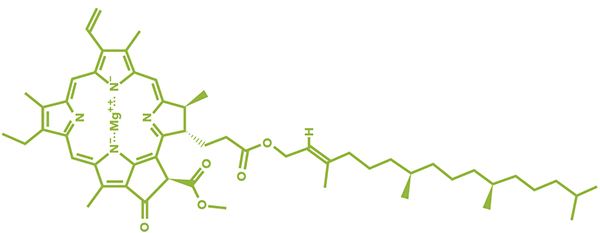
The structure of chlorophyll—with its long tail that hates water (the lipophilic tail).
The nature of sensors, the pigments and the organisms where they are found, and the environment where the algae live all combine to create certain scenarios where sensors simply don’t accurately measure chlorophyll. For example, an excellent paper by Bowling et al. describes some of the limitations of using sonde data for determining the types and abundance of cyanobacteria in different lakes (2016, Water Research 105:22). Sensors do a very good job of yielding relative abundance (a doubling in your sensor reading is a doubling in the population). In many scenarios, they can give pretty accurate measurements, but you need to validate that with a little bench work.
So again, sondes and sensors shine for early detection and are the best option available to get out ahead of a bloom situation. Sample Guy is not your early detection solution.
So what does this mean for your New Year’s Resolution? Sample Guy can build correlations between your sonde readings and samples collected at the same time and measured via Method 445.0 (or similar). In this manner, future sensor readings will inform HAB watchers when they need to take action, and in the case of Sample Guy he’ll know when to mobilize to collect more samples and data. This is far more efficient than deploying him every day to watch a bloom. Laboratory analyses should be used to periodically ground-truth sensor data, too, especially if a bloom looks like it’s composed of a different population of algae than usual. For savvier sonde users, Sample Guy can even use chlorophyll to calibrate a sonde…but that is a topic for another day (and please don’t put your TAL sensor in acetone or methanol!).
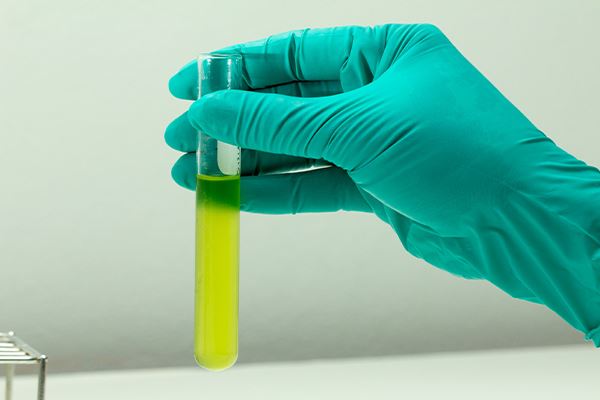
Laboratory analyses should be used to periodically ground-truth sensor data, especially if a bloom looks like it’s composed of a different population of algae than usual.
Sample Guy and Stinky Water
Moving on, there are at least two critically import HAB parameters for which environmental sensors do not exist: toxins and the taste and odor compounds geosmin and MIB. Toxins, geosmin and MIB are all secondary metabolites of algae—a fancy way to say we’re not sure why they make them. They may be secondary to algae, but toxins, geosmin and MIB are at the top of the drinking water manager’s list of concerns.
HAB management strategies for drinking water prioritize the removal of potentially harmful toxins, which is readily achieved by conventional treatment methods. By contrast, non-toxic geosmin and MIB can have an extremely low concentration and persistence throughout conventional water treatment, and thus a tendency to break through into finished water. That’s why drinking water can sometimes be a little stinky.
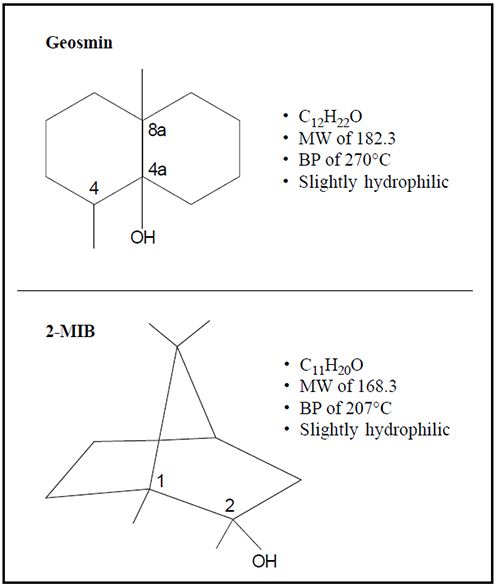
In spite of all the (justifiable) hype around toxins, many plant operators will tell you that their biggest nuisance with HABs is customer complaints about taste and odor. That’s because MIB causes a musty, and geosmin an earthy, smell and taste. The compounds’ effects are purely aesthetic, but consumers who detect the compounds perceive the water as being unclean and/or unsafe.
A big challenge for operators is that for some people the perception threshold is as low as 5 ppt (that’s part per trillion!) for MIB, and 30 ppt for geosmin. Though not often regulated due to their harmless nature, some countries have maximum allowable limits (MALs) for these compounds. The strictest examples are 2 ppt in South Korea and 1 ppt in both Japan and China. Even in the U.S., where there are no taste and odor MALs, the generally accepted goal is ≤ 1 ppt.
Operators thus need the ability to accurately measure geosmin and MIB in both raw and finished water. Monitoring in raw water can help one to adapt treatment to cope with spikes in the compounds, such as those brought on by algal growth. For finished water, testing should be more routine to minimize consumer complaints. But part per trillion sensitivity is well below what an environmental sensor would be capable of, no matter the analyte (do you know of any exceptions?).
Monitoring for taste & odor threats is a job for Sample Guy.

Geosmin and MIB are volatile (hence the odor) and EPA Method 502.2 was designed specifically for the detection of volatile organic compounds (VOCs) in water. Though not called out in the specific list of analytes, geosmin and MIB can be detected via this classical purge and trap (P&T) method, where any water-avoiding volatiles can be purged from the water sample by sparging, and trapped onto a sorbent material. The material is then heated and flushed with Helium gas to elute the trapped compounds. The compounds can be separated by gas chromatography and then detected via mass spectrometry (GC/MS).
However, Method 502.2 is not really designed for the detection of things in the ppt range, but rather in the ppb range. So, all possible actions should be taken to get a lot of sample and to concentrate the VOCs to get enough geosmin and MIB to detect. Proper collection of the samples and an up-front means of getting a lot of compound delivered to the trap are absolutely paramount if one is to achieve 1 ppt thresholds.
Sample Guy better be good at his job.
He might start by reading a really cool article that came out in 2019 which reviews the multiple techniques for extraction and detection of geosmin (Bristow et al., Trends in Analytical Chemistry 110:233). In it, the authors mention that P&T is one of the best ways to capture geosmin without the use of solvents.
I learned recently that OI Analytical (a sister brand to YSI in the Xylem portfolio) developed a method for geosmin and MIB detection at the 1 ppt level on an earlier model of the 4760 Eclipse Purge & Trap. Customers in Japan are using this method quite successfully with the 4760 and have reported that the OI Purge & Trap is the best one available for this purpose. Indeed the 4760 has some unique features, such as a water management system that minimizes sample losses, that make it ideal for this application. A colleague of mine developed a unique method to boost the sensitivity; we’ll have a poster on it at Pittconn 2022 in Atlanta!
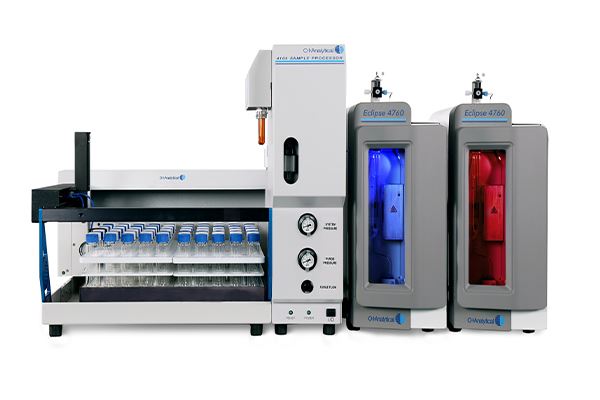
The two 4760 units on the right have a water management system that minimizes sample losses, that make it ideal for geosmin and MIB detection. Shown here with the 4100 autosampler (on left).
Why Sample Guy In 2022?
One might wonder why, working for a company that specializes in deployable sensors, I would open the year talking about the importance of sampling and laboratory analyses.
First, for almost 6 years now I’ve been at YSI, and I have used both sensors and laboratory equipment for over 25 years. I have concluded without question that YSI makes the best water quality monitoring sensors in the world, especially the EXO sonde.
Yet when highly accurate measurements are required, a deployed sensor simply might not be the right tool for the job, if it is available at all. (I note DO as an exception; I believe EXO’s optical DO sensor is the best tool for measuring dissolved oxygen in the environment). More data of a less accurate nature is often fine, especially these days where the tools are available to analyze and master huge data sets, and to quickly identify outlier points and drive machine learning. Sondes have thus become even more valuable than they were when they started becoming widely used 30 years ago. (Learn more, How Has Water Quality Monitoring Evolved?)
Yet sonde data, and even satellite data and remote sensing data, are best interpreted when coupled with laboratory data. I have proselytized for years now about the dangers of fixating on sensor specifications and accuracy, which are determined under tightly controlled—and not-industry-standardized—conditions. With big data sets and today’s ability to do analyses, that’s really not that big of a deal. But if you need tight numbers, especially numbers you want to compare with a historical data set, plan on becoming friends with Sample Guy.
Second, as previously mentioned, the vast majority of analytes, especially emerging contaminants, are still out of reach of today’s sensor technologies.
Lastly, in the interests of full disclosure, I changed jobs within Xylem recently! I’m now heading up our laboratory line of products. I built my career with one foot in the field and one in the lab and can’t wait to tell you more about how your laboratory analyses can go hand-in-hand with your water quality monitoring in the field. This change introduced me to OI Analytical, and I’m just blown away by what we can do with these instruments. You’ll be hearing a lot more from me about total organic carbon (TOC), GC detectors, and automated chemistry analyzers (ACAs) in 2022, as well as other benchtop beauties like YSI’s MultiLab. These instruments are used by leading environmental laboratories for everything from academic research to compliance monitoring in multiple countries.
If there’s a specific bench analysis you’d like me to discuss, let me know in the comments or on Twitter (@WaterWoman)!
In closing my New Year’s Resolution for 2022 is to reintroduce myself to Sample Guy, and to help our customers engage him for the most robust water quality monitoring data possible.
Happy New Year!